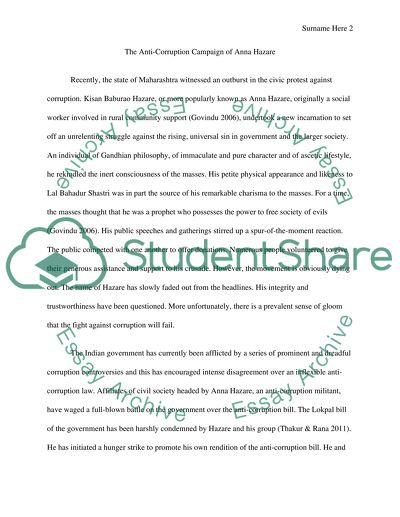Cite this document
(“Anna Hazare: The Seconf Gandhi's Fight against Corruption Research Paper”, n.d.)
Retrieved from https://studentshare.org/religion-and-theology/1439527-anna-hazare-s-use-of-gandhi-an-methods-to-fight
Retrieved from https://studentshare.org/religion-and-theology/1439527-anna-hazare-s-use-of-gandhi-an-methods-to-fight
(Anna Hazare: The Seconf Gandhi'S Fight Against Corruption Research Paper)
https://studentshare.org/religion-and-theology/1439527-anna-hazare-s-use-of-gandhi-an-methods-to-fight.
https://studentshare.org/religion-and-theology/1439527-anna-hazare-s-use-of-gandhi-an-methods-to-fight.
“Anna Hazare: The Seconf Gandhi'S Fight Against Corruption Research Paper”, n.d. https://studentshare.org/religion-and-theology/1439527-anna-hazare-s-use-of-gandhi-an-methods-to-fight.


